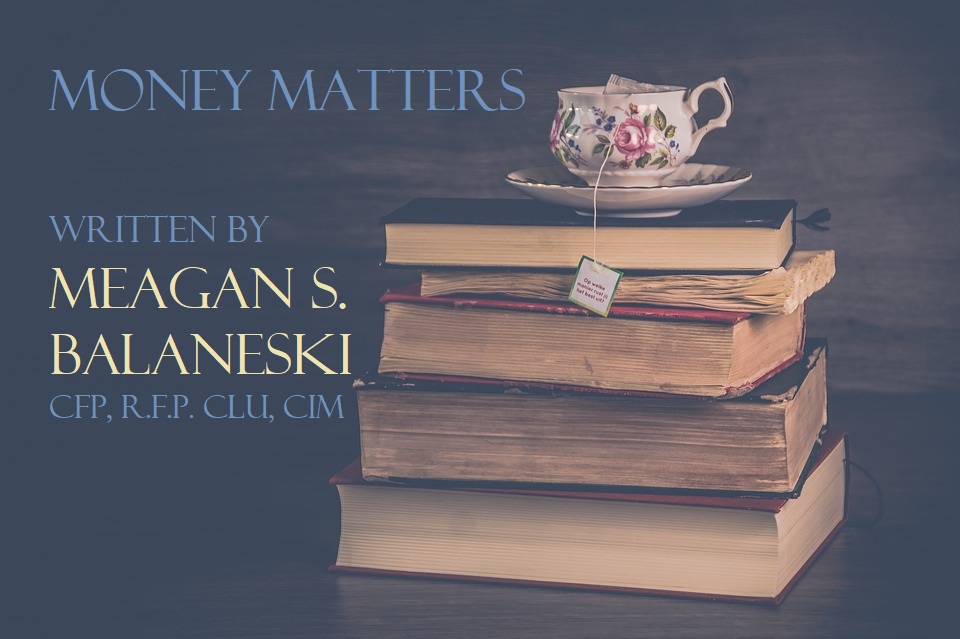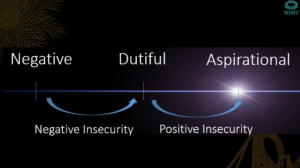16, 5125-50 Avenue, Vermilion, AB T9X 1A8
Call/Text: 1-780-853-2949
Fax: 1-888-810-5717
E-mail: info@cupoftfp.com
© 2021. Cup of T Financial Planning. All Rights Reserved. Website Disclaimer

A 20-part mini-series
Hello friends! Welcome to the second installment of the Financial Planning Vicennial.
First things first, I have some exciting news! I have been officially approved by the regulators for licensing as a Portfolio Manager. Many of you know how important that is for me, and how much effort it’s been to get here. So a shout out to our securities dealer Aligned Capital Partners for being so supportive during this process, and to all you amazing people for standing by my side through this adventure!
Today we focus on financial planning priorities at age 56.
To set the mood for the conversation, I want to introduce the idea of positive insecurity. Positive insecurity means motivating to secure a positive future rather than shaming to avoid a negative one.
For a visual, this is a snapshot from a talk on forgiveness I did for MDRT in 2020. It was supposed to be pretty prestigious. On stage in Anaheim in front of potentially hundreds of other advisors. But then, you know covid. So we filmed it from my dining room.

The reason why it’s important for me to help you understand the difference between negative insecurity and positive insecurity is that today’s column isn’t going to be like anything you’ve ever heard before. Financial planning for life after your most isolating tragedy.
Pre-covid, the average age of widowhood in Canada was age 56.
Welcome to the Financial Planning Vicennial – topic age 56 – planning for widowhood.
Because of the emphasis on positive insecurity, we’re just going to skip right over the conversation on life insurance or making sure you’ve saved enough, or getting your Wills updated. Once you’re widowed it’ll be too late to make those decisions. So let’s just assume that you’re an intelligent human being who’s already had those conversation, secured the insurance coverage you need, have been a dedicated saver, your Wills are updated and you don’t feel like being patronized right now. 😊
Pre-widowhood Planning
From a financial perspective, one of the simplest ways to make the transition into widowhood as smooth as possible, is to get your house in order ahead of time. Here are the five key things you can do together ahead of time.
Item number One – Consider making your bank accounts and your non-registered investment accounts joint. Merging accounts in is not a taxable event, and it makes the process of re-individualizing after a loss a lot easier. Caution, though, that if an account came from an inheritance, you might want to refrain from comingling it with family assets so that matrimonial property laws can’t touch it.
Item number Two – Buy a physical safe, and stash all your important documents in it. If you don’t have room in for a safe, consider an airtight container in the fridge for just the essentials. Fun fact, fridges are not totally fire proof, but they almost are. Specifically, you should know where your birth certificates, marriage certificates, and any previous divorce certificates are.
Item number Three – Start a cash flow binder and pay all of your bills together. Make good notes. Try to record all of the reoccurring monthly bills, and the once-per-year bills, like property insurance or insurance payments. A survivor needs to know HOW to be okay once they’re on their own.
Item number Four – Get your own credit card. Credit is like a house plant. You can both give the plant water, but each plant only has one stalk. For you to each have a credit score, you need to both be maintaining a separate plant, even if you share a pot. If one of the spouse dies, the surviving spouse inherits the pot. Think of a mortgage. If one plant dies, the other plant doesn’t get kicked out of the pot. But unless the surviving plant is healthy, they may struggle to prove enough credit when it’s time for the mortgage to renew.
Item number Five – Check your beneficiaries! Especially if you’ve remarried, and extra-especially if you haven’t redone your Will since. We recently had the beneficiaries on a life insurance policy unexpectedly listed as the (now deceased) parents of a spouse after many years of (continuing) happy marriage. It’s so important to make sure beneficiary designations are correct well in advance of a claim. Studies now show that widowhood has a similar cognitive effect (and without support may actually accelerate) Alzheimer’s, so the risk here is that a beneficiary designation changed in the final hours could be challenged as lacking capacity, and, if successful, the original beneficiary designation would stand.
If you’re age 56, the first highlight of your financial planning this year should be to get your duckies all lined up. Because, while losing your spouse shouldn’t be your Plan A, we’re at the average-age marker now, so treat it like it’s real.
Post-widowhood planning
And now part two. What if it is real.
There are three stages of survivor planning that we follow. Stage 1 is very transactional. We call it “matters of urgency”. Things like claiming on your life insurance, and getting your late spouse’s accounts rolled over into your name. The second stage is stabilizing income, making sure that cash flow in matches cash flow out, and projecting this out for the rest of your decades. And the third phase is a transition of values, where we talk about inter-generational estate planning and charitable giving.
Since stage number 1 is transactional, there isn’t much for planning tips. We’ll start here at five key planning considerations for stage 2 – income stabilization.
Item number One – Consider a spousal RRSP contribution in your own name. As long as you are age 71 or younger, you can contribute to a spousal RRSP in your own name in the year of death or up to the first 60 days after the end of that year (basically the normal RRSP contribution period). Your spousal RRSP contribution would give your late spouse a tax deduction, and use their RRSP contribution room, but the RRSP assets would be in your name. Later, you can merge the spousal RRSP into your personal RRSP just to keep things clean.
Item number Two – consider foregoing a rollover of RRSP assets. You RRSPs and RRIFs can roll to your spouse if you name them as a beneficiary, or alternatively for your RRIF, as a “successor annuitant”. What’s the difference? A beneficiary inherits the money, whereas an annuitant inherits the account. Because the successor annuitant inherits the account on death there’s basically just a name change, and future withdrawals are now taxed to the survivor. Because a beneficiary inherits the money, they have a choice on whether to accept a ‘spousal rollover’ and merge the funds into their own RRSP or RRIF, or to waive the spousal rollover. In that case they inherit the money, but the don’t inherit the tax deferral. That goes to their late spouse, as if the RRSP or RRIF was withdrawn immediately before death.
From the technical side, if a spousal rollover is accepted, a T4RSP is issued to you, the surviving spouse, in the amount of the full RRSP or RRIF account, as is an offsetting RRSP contribution slip designated as ‘60L’, which means it won’t affect your RRSP contribution room. What they do potentially affect though, is your old age security. Because of way your taxes are filed (the T4RSP adds to your total income, and then OAS is calculated, and then the RRSP contribution receipt is applied after), you could be losing your old age security the year following the loss of your spouse.
If you are named as beneficiary and not as successor annuitant, you have the option to forego the spousal rollover on the RRSP or RRIF assets. Your late spouse pays the tax, and you preserve your OAS income.
Item number Three – Check into the survivor benefits of your spouse’s health and dental plans. Sometimes, though not always, there is a two-year survivor period on employer benefits packages. It may not feel like a priority in the aftermath of a loss, but if you do have survivor benefits, you need to consider getting yourself in to see the dentist. Sooner rather than later, in case there are follow-ups required and you can get them into the same survivor period.
Item number Four – If you are self-employed, consider switching your income to dividends to avoid CPP contributions. Canada Pension Plan is unique among all other pensions, in that it has a severely restricted survivor benefit. CPP benefit rules changed in 2019 and are pretty complex, but generally speaking, “The most that can be paid to a person who is eligible for the retirement pension and the survivor’s pension is the maximum retirement pension”. Plus there’s a flat amount of about $200. So while there are other benefits to CPP to consider, like a disability benefit, you could be now contributing to CPP without much, if any, increase to your pension.
Item number Five – If your spouse had not yet applied for their OAS benefits, and they were over the age of 65, you can retroactively apply for one year of OAS benefits on their behalf, after death. The retroactive OAS benefit can then be filed as a Rights and Things tax return, which is a separate return from their regular income tax return. We like Rights and Things returns because they get their own basic personal amounts and age amounts deductions, and because they’re considered separately, so the OAS benefit being received as a lump-sum retroactive payment isn’t impacted, for clawback reasons, by the income on the regular tax return.
Therefore, if you are age 56, the second key financial planning priority is to get your people all lined up. Check in with your investment advisor, your insurance advisor, your health and dental team, and your accountant. Make sure there aren’t any lose ends you’re missing, and know that you have a team of professionals out there to support you. There are a lot of fairly technical planning pieces to consider in a short timeframe after a loss, and you’re going to need to know who to turn to.
None of our moments are guaranteed, and so we can be grateful for every moment that we are given. What a rare and beautiful opportunity it is to be alive right now.
For more information on planning for widowhood, or if you have questions on working through the aftermath, speak to a Registered Financial Planner today.
Meagan S. Balaneski, CFP, R.F.P, CLU, CIM
Portfolio Manager
Aligned Capital Partners
The opinions expressed are those of Meagan S. Balaneski, and may not necessarily reflect the views of Aligned Capital Partners
Meagan S. Balaneski can be reached at mbalaneski@alignedcp.com
Written by Meagan S. Balaneski, CFP, RFP, CLU, CIM
Certified Financial Planner
The information contained in this blog is for general information purposes only and is the opinion of the owners and writers and does not reflect those of ACPI. This information does not provide specific personalized advice including, without limitation, investment, financial, legal, accounting or tax advice. Please contact Meagan S. Balaneski regarding your particular circumstances.